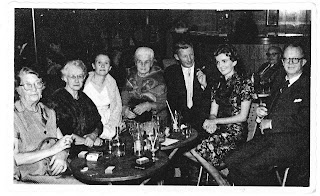We got back from out morning run and Aurora jumped up onto her corner of the couch as she usually does. I took her lead and harness off and started to wash the dishes in the sink. I then heard, maybe 15 minutes later, the washing machine finish. I started to unload the clothes and as usual, Aurora came out to join me in the wash house. I was occupied doing my domestic duties but I heard her drink from her water bowl and then I looked down.
Her face had swollen up and it looked terribly heavy and sore. I dropped everything in my hands and instantly started to panic. I didn’t need to look down at her again before I was in vet mode. It ran through my mind that you have 30 minutes to get to a vet if it is a snake bite. As I ran out to open the gate she trotted out with me and jumped into the car, excited to be heading out. As we drove to the closest vets, a mere five minutes away, she jumped around the car as usual. At least her spirits were up and she didn’t seem sick. She rolled around on the back seat trying to scratch her poor fat head against it. She lent her head on my shoulder for a moment as we stopped at the lights and I glanced at her face again. It was so swollen and her skin was so stretched that her hair stood on its ends and her eyes were little slits.
I hurried from the car into the vets with no shoes on and Aurora in my arms. As she is a staffy cross fox terrier I thought the lady may think her head was meant to be that fat. She asked me what was wrong and I struggled not to cry as I had no idea what was happening. “Her head is fat,” I told the receptionist.
She sent me into a room where the vet nurse came and talked to us and I started to calm down. She said it seemed like a bite of some sort and she would probably just need a needle and some rest and she would recover. There was no need to panic as there would be no permanent danger. Aurora strolled around the room shaking her head and sometimes sitting on the floor to try and scratch her face but her spirits were still up. The poor thing looked like her big bobble head was extremely sore and uncomfortable.
The vet came in and he explained that he thought the bite was on her mouth, most probably from a wasp. He gave her two needles and the patient was ordered to rest. The swelling on her face had receded within a couple of hours but her nose was swollen until the next day.
My partner was ordered to mow the lawn as soon as he got home and there has never been an incident since. There is not a lot you can do to stop this from happening as little mischievous dogs will chase wasps and cause trouble but the lawn was a start. Be sure to always take your pet straight to the vet if their face begins to swell as you never know what it could be. In the case of a snake bite, try to get a photo or remember what the snake looks like and you have 30 minutes to get to the vet for the anti venom. We were lucky it was just a wasp.
Me and my wolf pack
Alyce, Aurora and Dex














.....JPG)


